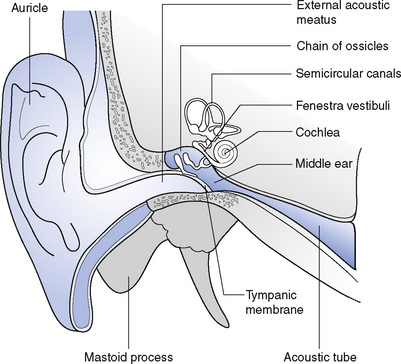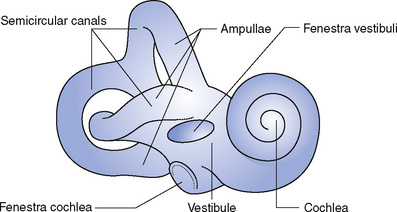5 The ear
The structure of the ear
The external ear has two parts: the auricle and the external acoustic meatus (Fig. 5.1). The auricle projects from the side of the head. It is composed of a thin piece of elastic fibrocartilage, covered with skin, which funnels sound waves towards the external acoustic meatus. The external acoustic meatus is a tubular passage approximately 4 cm long leading into the temporal bone. The outer one-third has walls of cartilage and the inner two-thirds walls of bone; the canal is curved, running first forwards and upwards, then backwards and upwards and finally forwards and slightly downwards. These curves may be straightened by gentle traction on the auricle: in adults the pull is upwards and backwards; in children backwards only; and in infants downwards and backwards. The inner end of the meatus is closed by the tympanic membrane. The skin lining the cartilaginous meatus contains hair follicles and numerous glands, which secrete cerumen. These protect the canal from foreign bodies by entangling dust and other particles but the cerumen may itself block the canal if it accumulates and will then require removal.
The bony labyrinth is again divided into three parts: the vestibule, the cochlea and the semicircular canals (Fig. 5.2).
< div class='tao-gold-member'>
Stay updated, free articles. Join our Telegram channel

Full access? Get Clinical Tree




